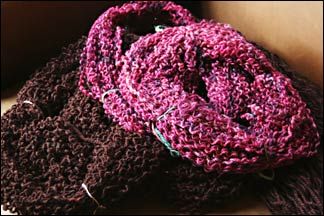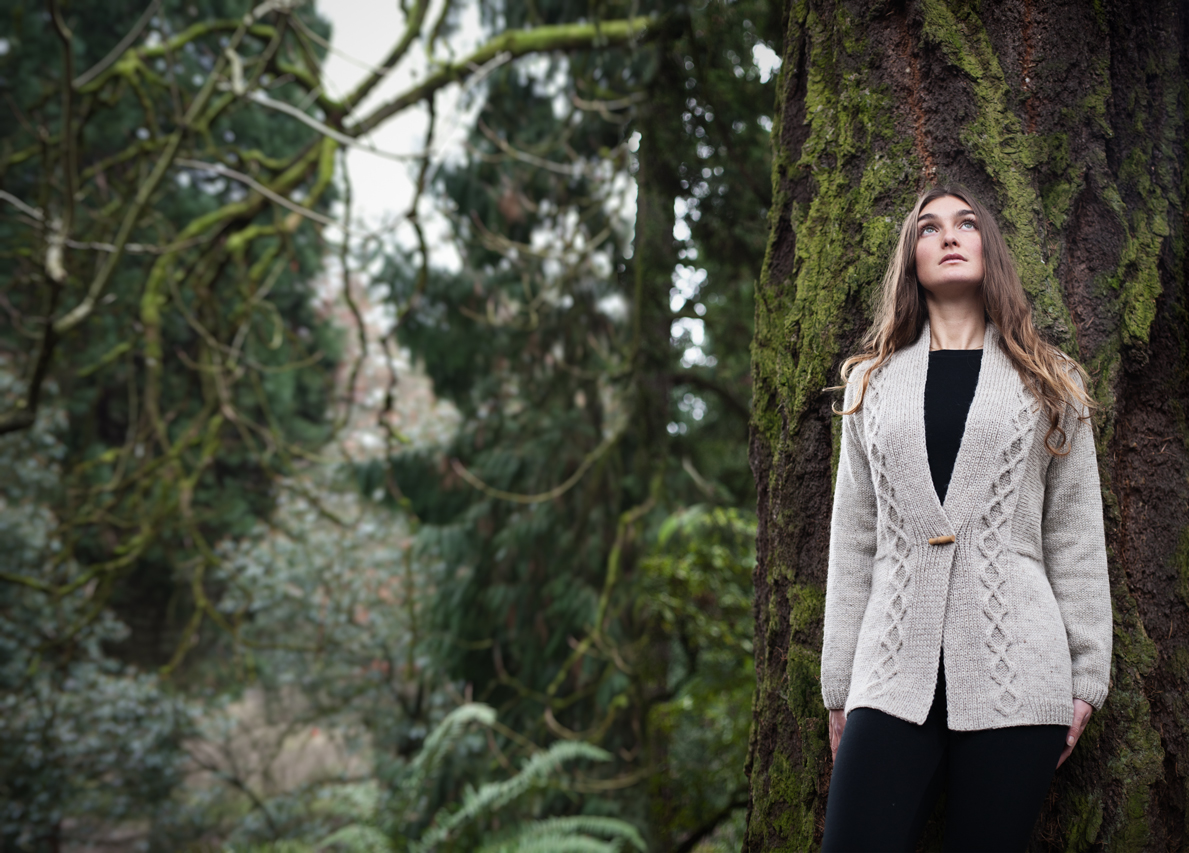
hey Kidz! What day is it?
It’s WashDay! Time to take that honkin’ mistake project and send it to the TUBS!
To go any further on my Shazam Cardi, I’ve got to farm back into a couple of leftover pieces for their precious yarn.
I *unwind* the piece into a center-pull ball using my little ball winder. Then I make skeins from the balls, using my swift and loosely tie in 3 places so they don’t seperate in the next step…
Now I fill my kitchen sink with warm water and 2 tiny drops of plain dishsoap and soak, rinse with plain water after I’ve seen the loopies relax, then dry flat…
Just for fun, I added a couple of skeins of Fuschia variegated wool from a trial project that didn’t turn out. It’s now destined to become a cowl…
I wore one in Low Teen Temps all day yesterday working outside and with it up around my ears, didn’t even reach for my hat!


Hey Bonne Marie — Here’s one of the “Shoot, I don’t know; it’s just the way it’s done” sort of questions I get from my beginner-knitter daughter. Why do we purl the first row after we cast one?
Because that puts the best looking side of the long tail cast-on on the knit side of your fabric.
I was always too cheap to buy a ball winder until I saw this one for 26.85 at http://store.knitting-warehouse.com/072803.html
Really love it! And I use a lamp shade for a swift.
You don’t HAVE to purl the first row after a long tail cast-on. It is knitter’s choice; use whichever you feel looks better.
Just wanted to thank you for the great brioche stitch hat pattern! I used it for Lisa’s hat project (dogblogdog.com) and it was a pure pleasure to knit. Thanks for your generosity in sharing this!
P.S. I know! I know! A long-tail cast on is actually a regular loop cast on coupled with the first row of knitting. Therefore, if you are knitting in pieces and turning your work at the end of the cast on row, your first row is a wrong-side row. Those who knit in the round just continue knitting.
I’ve always purled that first row because I like to have the smoother, rolling loops facing the right side of the piece. That seems to be the convention as I was taught, too – bumpy bottom edge becomes the wrong side of the piece…